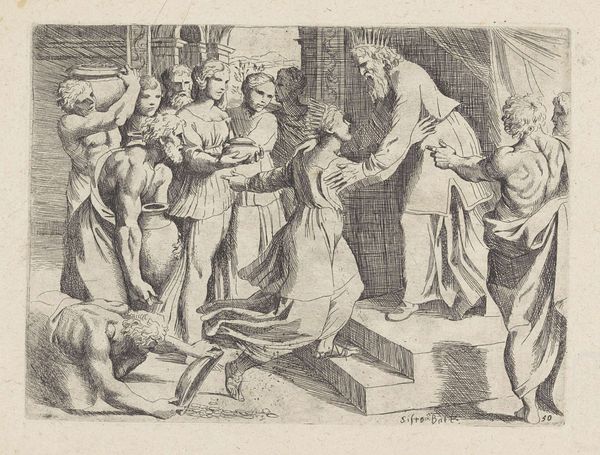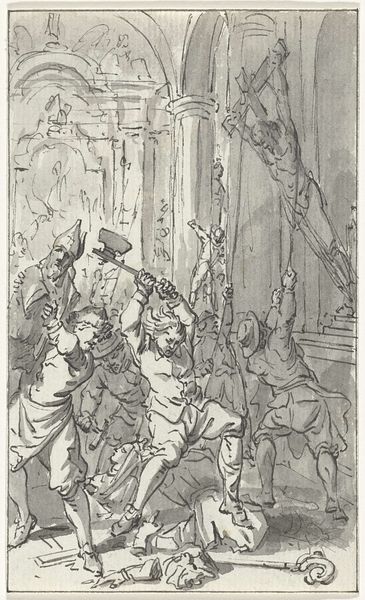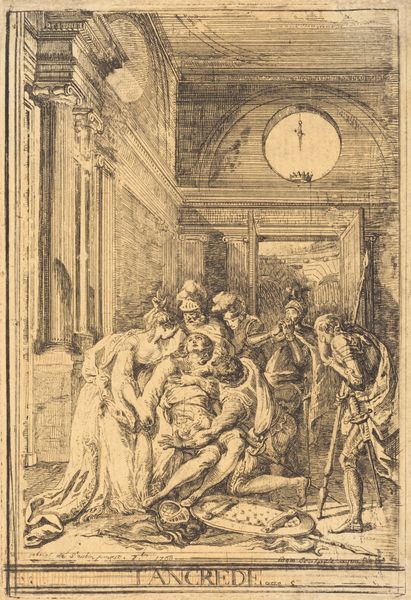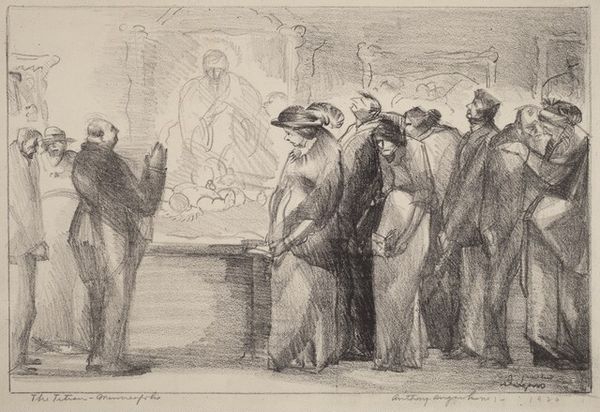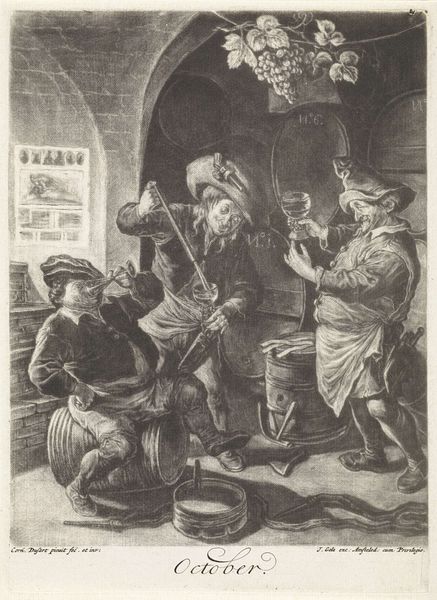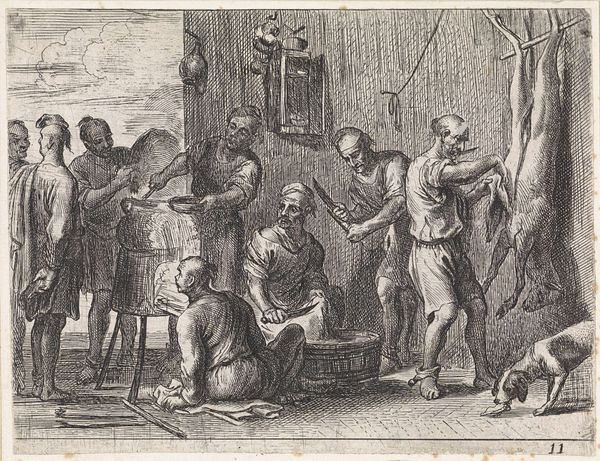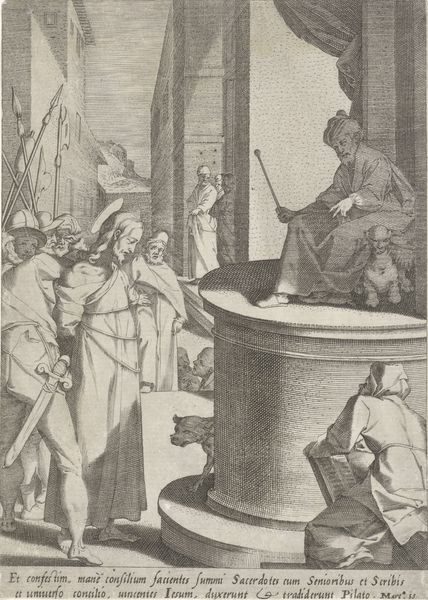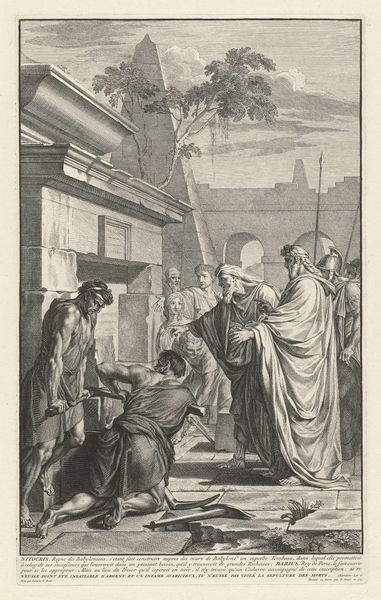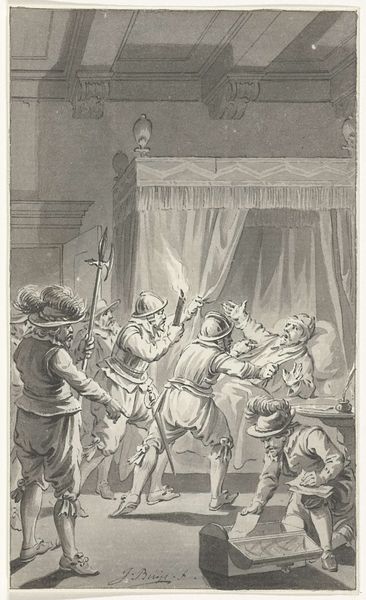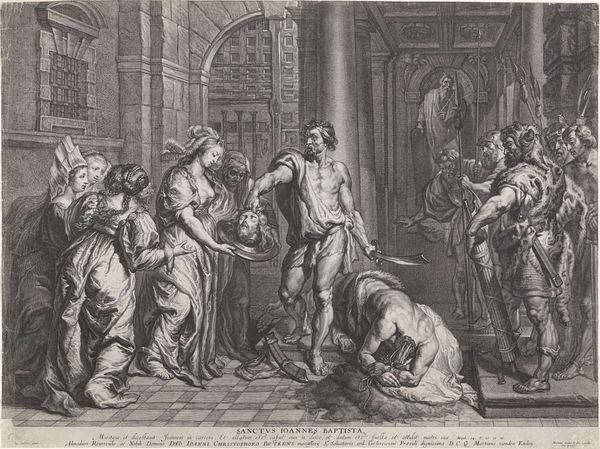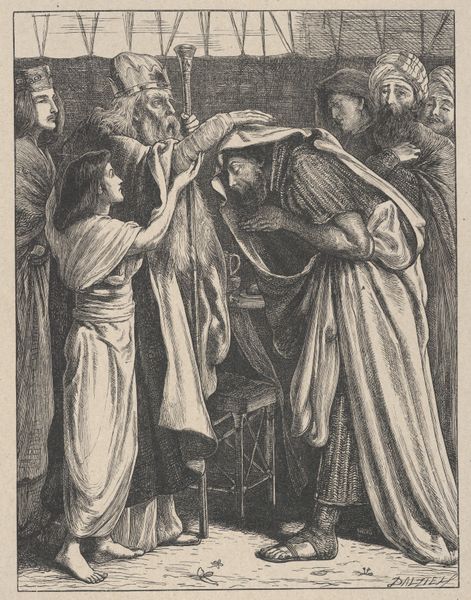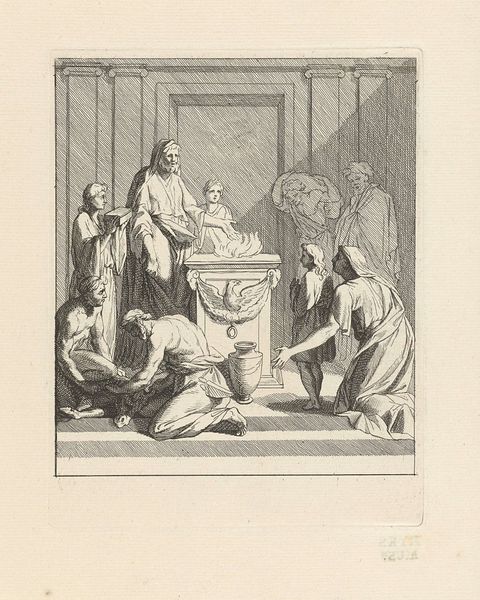
These Hampstead women are typical of the thousands engaged on the useful and laborious work of collecting salvage of every sort to help the war effort 1941
0:00
0:00
drawing, graphite
#
portrait
#
drawing
#
graphite
#
genre-painting
#
realism
Copyright: Public domain
Curator: Here we see a drawing from 1941 by Ethel Léontine Gabain, rendered in graphite. The title is rather descriptive: "These Hampstead women are typical of the thousands engaged on the useful and laborious work of collecting salvage of every sort to help the war effort." Editor: My first thought is of the incredible effort these women are exerting, the sheer manual labor involved. Look at the strain and teamwork—the repetitive process of it all. Curator: Gabain made this during World War II, of course, when resourcefulness and repurposing became crucial. It serves as a visual document of women's vital contributions on the home front, which had considerable ramifications to the sociopolitical climate of England at that time. The work depicts a reality where traditional roles were completely upended, and necessity shifted society. Editor: I agree entirely, but I am thinking, too, of what is IN those sacks? I see clothing, maybe some paper products? The detritus of daily life reworked into war resources. I think the graphite as a medium becomes essential, since there is such an immediacy and utility to it as a relatively inexpensive material. Curator: Precisely! And note how she doesn’t glorify their labor, but depicts it realistically, with their rolled-up sleeves and practical clothing, no fashionable airs. We are also encountering how the drawing itself functions, created in series to become distributed across broadsheets and posters as messaging, not exclusively intended to live within the sanctified walls of an exhibition space. Editor: I appreciate the way she conveys both the weight of their work, physically, and also the significance of it to the national effort. The social context of intense manufacturing is evident here. Also, there’s a real sense of dignity, you know? It makes you think about the value, re-valuation, really, of manual labor during wartime. Curator: Absolutely. This work pushes against any artificial divide between “fine art” and documentary work. It blurs the lines and illustrates how propaganda, history and visual culture operate within overlapping frameworks. Editor: Gabain has delivered such a stark depiction here, which allows the viewer to think about a historical moment by studying material processes of these unsung figures of society. Curator: And to consider how an artwork becomes a historical document, simultaneously.
Comments
No comments
Be the first to comment and join the conversation on the ultimate creative platform.
